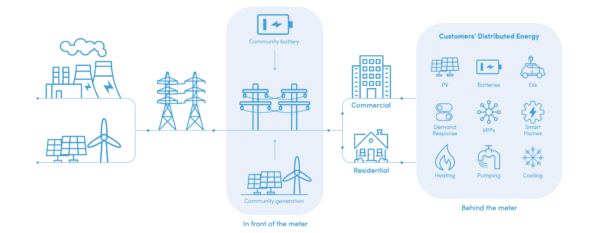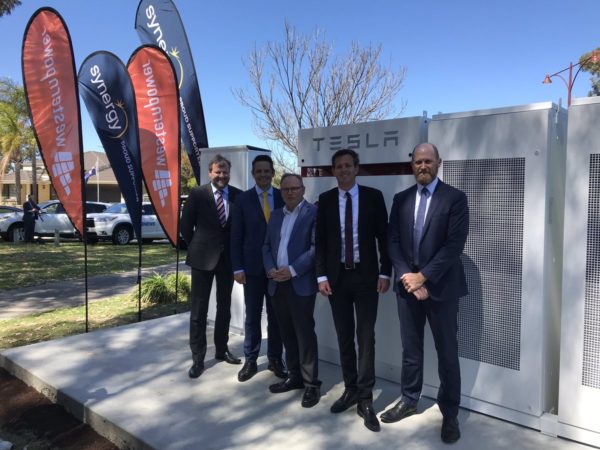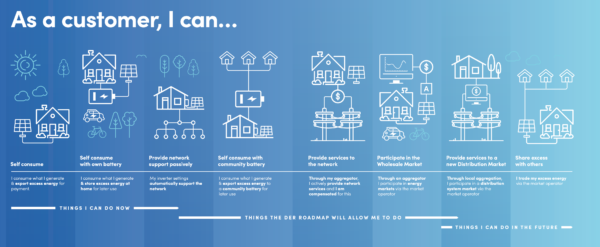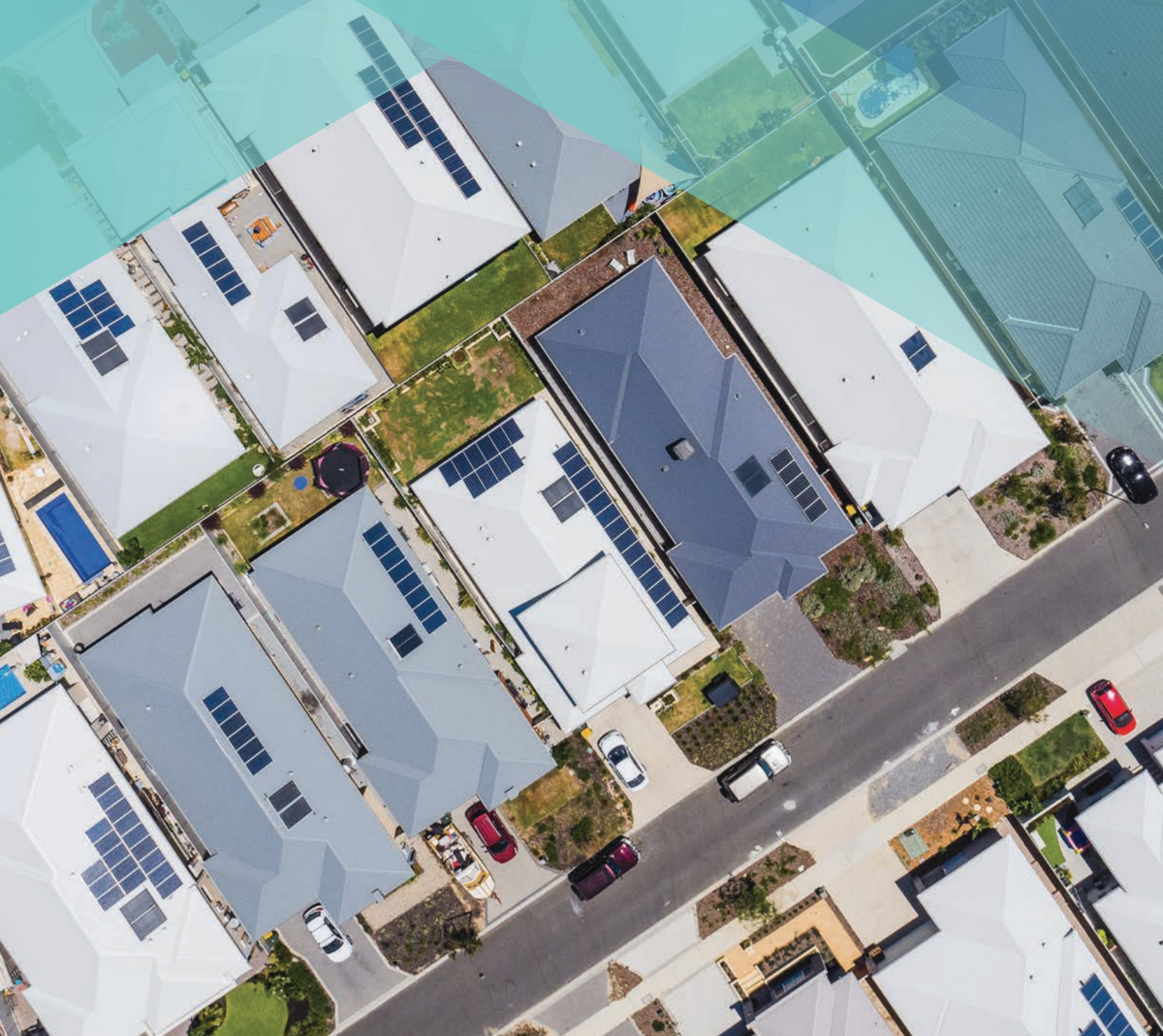“Solar is a big part of Western Australia’s energy mix and we want that to grow,” says the state’s McGowan Labor Government in a video promoting its new five-year Distributed Energy Resources Roadmap, released on Saturday.
One in three households in the South West Interconnected System (SWIS) alone (as distinct from regional Western Australia) live under rooftop solar, a number growing at 2,000 households a month, which has prompted the government to get “on the front foot” in planning and implementing DER integration in advance of problems forecast to hit by 2022 a grid unsuited to the intermittent two-way flow of energy.
Of course, distributed energy resources include not only behind-the-meter energy generation, but also energy storage, inverters — devices that convert or direct current (DC), to alternating current (AC) — electric vehicles and other controllable loads such as hot water systems and air-conditioning, and the devices such as smart meters that can control them.

Image: WA Energy Transformation Taskforce
Challenges and opportunities abound in the uptake of DER by home and business owners.
On the downside, substantial penetration of rooftop solar can leave the traditional energy system spinning its wheels and in danger of blackout when rooftop generation is at its highest around the middle of the day, and demand for energy is low. Yet the system needs to maintain enough generation capacity to meet high demand in the evenings, when the source of rooftop generation sinks below the horizon.
All Australian states have been looking to incentivise buffers such as battery storage; and the Australian Energy Market Operator (AEMO) has sought to understand energy flows under high rooftop penetration, mechanisms for better managing the rooftop resource and its interaction with the grid.
In May 2019 WA Minister for Energy, Bill Johnston announced the development of a state Energy Transformation Strategy of which the DER Roadmap is the first of three major work streams.
It aims to complement and amplify the benefits of customer investment in clean energy generation, and to dovetail state distribution and electricity management infrastructure to meet future demand and options for consumer participation.
Among the Roadmap’s suite of recommended actions are: testing and implementing integration technologies, removing barriers to DER participation (such as linking rental properties to shared community batteries), piloting electricity tariffs that better reflect the value of services provided by all parties, and ensuring reliability of electricity for all customers.
“The strong view of the Taskforce is that the Roadmap is not a menu of possible initiatives. Rather, all 36 actions are necessary to achieve a complete and successful transition to a DER future,” writes chair of the Energy Transformation Taskforce, Stephen Edwell in the foreword to the now published document.
A state-wide government-run plan
Across Western Australia, the Roadmap will be jointly implemented by the government department Energy Policy WA; Western Power, the state government-owned transmission and distribution provider in WA; Horizon Power (also state owned), the generator, distributor and retailer of energy to regional and remote WA; Synergy, WA’s largest energy (electricity and gas) provider, another state-owned corporation; and AEMO.
The Roadmap prescribes progressive rollout of shared battery storage into communities — an alternative to individual household battery installation which has been trialled by Western Power and Synergy with three Tesla bulk batteries of around 450 kWh serving 192 households.
The PowerBank project, as it’s known, proved successful in reducing the energy bills of 92% of participants and showed the potential for distributed storage to absorb excess solar energy generated during the day to support the grid during peak demand periods; but the mechanism for valuing and paying for shared storage services requires further development.

Image: Western Power
Under the DER Roadmap, WA will implement a distribution-network visibility program, to enhance understanding of power flows and constraints; and SWIS-specific autonomous inverter settings will be enabled to provide better performance during disturbances to the grid.
Pilots of new tariff structures that will reward consumers for running appliances during the day, when solar generation is high, will be initiated and evaluated.
One important aim of revising tariff structures is to better distribute costs of maintaining the underlying electricity distribution and management systems, which benefit all consumers. Currently, the Roadmap executive summary explains, “customers who install DER contribute less than their share of system costs and are disproportionately benefiting from lower bills”.
As a result, energy consumers such as those in rental properties, and low income customers and apartment dwellers who are unable to access DER are subsidising those who can. “In short,” says the Roadmap, “the current tariff structures are incompatible with a high-DER energy system.”
Bringing WA’s grid and electricity markets into the DER age
This year will see Western Power invest in grid-support technologies, including 5 MVAr reactor units to be installed this month (April), to provide reactive power compensation when energy demand in the SWIS Wholesale Electricity Market (WEM) is lower than the system can safely withstand. Other deployments will include battery storage and voltage-control equipment to maintain system stability on low-demand days.
Next year will see the amendment of the network Access Code to provide greater opportunities for innovators in the field of DER to invest in and provide network services to Western Power and receive revenue in return.
Commencing in July 2020, a comprehensive virtual power plant pilot will demonstrate the technical ability of DER to respond in a coordinated way under central dispatch instructions. Within two years, by July 2022, the VPP pilot will also have demonstrated “the incorporation of aggregated DER into energy markets, including market dispatch and settlement arrangements from the market operator to individual customers,” states the Roadmap.
Proof points along the road
AEMO has done significant work in verifying the potential of VPPs to contribute to a secure electricity system that also rewards participating households. Last month it released a knowledge sharing report on its Virtual Power Plant Demonstration program.
“Our report highlights how our first VPP participant, the SA VPP, performed during several events in the National Electricity Market (NEM),” said Violette Mouchaileh, AEMO’s Executive General Manager, Emerging Markets and Services.
“This included immediately charging and discharging batteries in response to frequency deviations following a contingency event to maintain stable NEM frequency levels, and responding to energy market signals by batteries pre-charging in anticipation of elevated prices and discharging during the elevated price event,” Mouchaileh said.
AEMO earlier this year also implemented gathering of more comprehensive data on distributed energy resources connecting to the east-coast National Electricity Market; a similar DER register will be established for the SWIS.
Such a register of accurate and up-to-date data will allow AEMO to refine its forecasting and planning; “inform the direction of standards on DER performance requirements over time”;and ultimately better manage real-time power system and market operations throughout Australia’s grid-connected systems.
Helping consumers embrace the new grid
Customer engagement and education, along with targeted support of vulnerable customers will be a constant throughout execution of WA’s DER Roadmap: “In general, customer understanding of the electricity market is currently low,” says the document, which identifies components of the electricity price cost stack; the basis for Renewable Energy Buyback Scheme pricing; the existence of negative pricing during low demand periods; and the compounding of risks as the level of solar PV penetration increases over time, as areas that consumers need help to take into account.
“To reduce the risk of resistance and to help participants understand the need for change there will be a need for a strong, ongoing education program,” say authors of the Roadmap.

Image: WA Energy Transformation Taskforce
Coordinating and improving DER integration in WA is intended to reduce costly infrastructure investment that would increase the costs of delivering electricity; and also negate the need to impose limits on the size and number of rooftop solar PV systems that customers are able to install on the network.
“The actions in the Roadmap will allow us to keep feeding more renewable energy into the grid for the benefit of all Western Australians,” said Johnston when launching the program on Saturday. “It’s a robust plan for a brighter energy future.”
This content is protected by copyright and may not be reused. If you want to cooperate with us and would like to reuse some of our content, please contact: editors@pv-magazine.com.









2 comments
By submitting this form you agree to pv magazine using your data for the purposes of publishing your comment.
Your personal data will only be disclosed or otherwise transmitted to third parties for the purposes of spam filtering or if this is necessary for technical maintenance of the website. Any other transfer to third parties will not take place unless this is justified on the basis of applicable data protection regulations or if pv magazine is legally obliged to do so.
You may revoke this consent at any time with effect for the future, in which case your personal data will be deleted immediately. Otherwise, your data will be deleted if pv magazine has processed your request or the purpose of data storage is fulfilled.
Further information on data privacy can be found in our Data Protection Policy.